Agentic AI vs Traditional AI: Meet the Future of Intelligent Work
July 01
Artificial Intelligence
Blog

Agentic AI vs Traditional AI: Meet the Future of Intelligent Work
Artificial intelligence is no longer just a smart tool, it’s becoming a strategic partner. As agentic AI gains traction, we’re witnessing a transformation in how organizations design workflows, drive innovation, and scale their teams. While traditional AI responds to prompts, agentic AI takes the initiative with planning, executing, and learning independently.
In this blog, we explore the core differences between traditional and agentic AI, highlight leading platforms, and offer a glimpse into how these autonomous systems are reshaping the workplace.
Traditional vs Agentic AI: Understanding the Shift
Traditional AI such as chatbots, recommendation engines, or image generators. It focuses on task automation. It works well within predefined parameters but waits for instructions.
Agentic AI, by contrast, acts like a junior teammate. It doesn't just respond, it decides, plans, and executes autonomously. The key differentiator? Initiative.
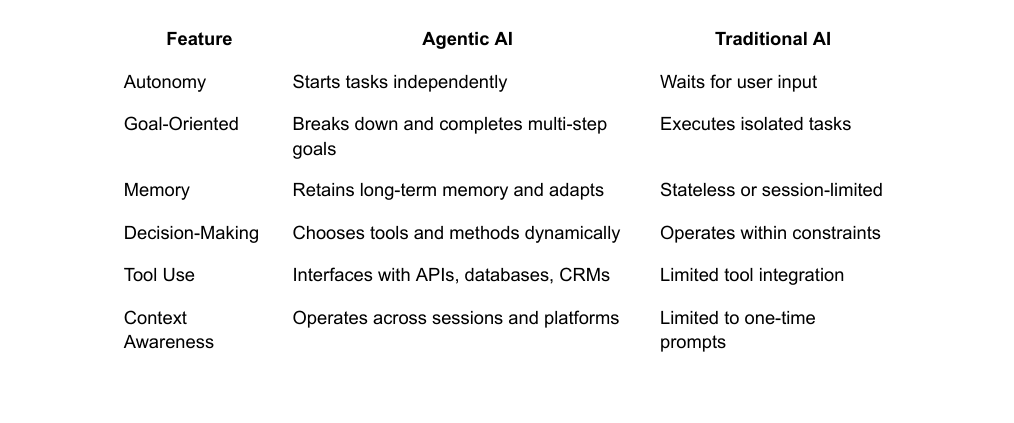
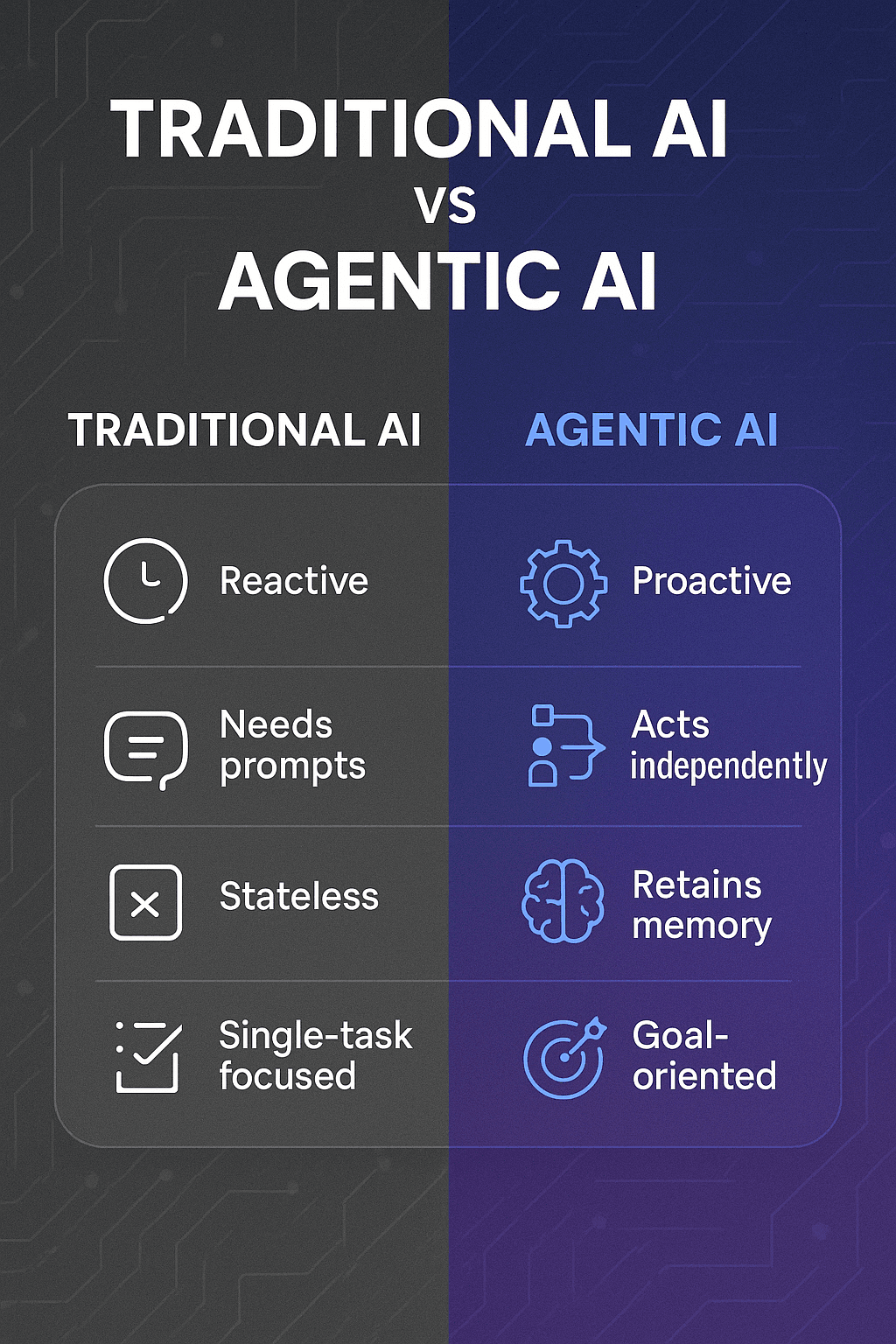
Shared DNA: The Common Ground
Despite their differences, traditional and agentic AI share several technological foundations:
- Transformer-Based Language Models: Both leverage architectures like GPT-4 and BERT to understand, generate, and reason through natural language.
- Data + Compute-Driven Performance: High-volume, high-quality data and scalable cloud compute power are vital for both AI types.
- Cross-Platform Deployment: APIs, browser extensions, embedded chat, and mobile integration power multi-channel interactions.
- Broad Industry Utility: From healthcare and customer support to education and marketing, both AI models are enhancing productivity.
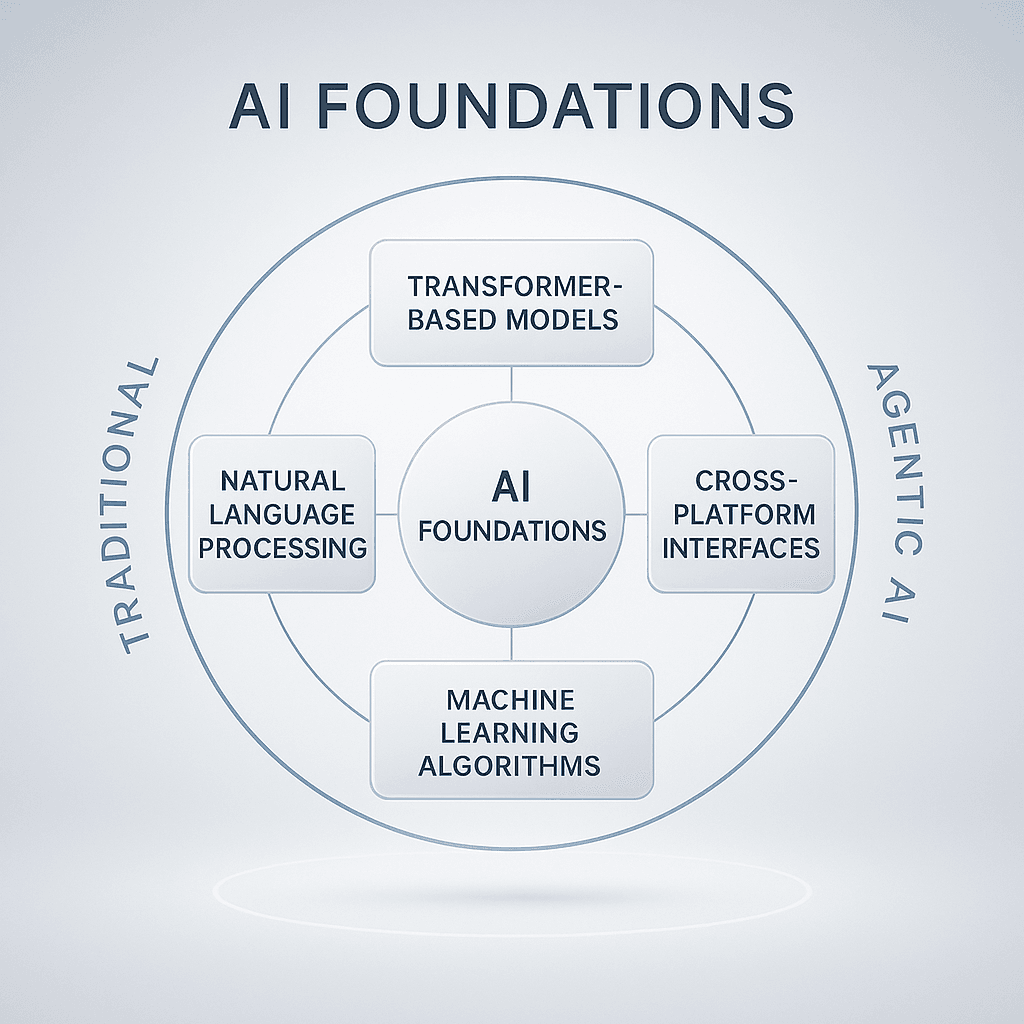
Real-World Examples: Meet the Agentic Platforms
Agentic AI isn’t just theoretical, it's live and working. Here are some of the most prominent platforms making autonomous AI a reality:
- Devin (Cognition Labs): The world’s first AI software engineer that writes, tests, and deploys code autonomously.
- Auto-GPT: Open-source agent that decomposes goals into sub-tasks and executes them without constant human intervention.
- BabyAGI: Lightweight, memory-equipped agent ideal for task reprioritization and self-directed workflows.
- HyperWrite AI: Productivity-focused assistant that manages scheduling, emails, and content generation.
- ChatGPT Pro (with Tools & Memory): Enhanced with plugins, API access, and persistent memory for long-term workflows.
- LangChain, CrewAI, AutoGen: Frameworks for building multi-agent systems capable of dynamic decision-making and tool use.
- Open Interpreter: Runs code and automates tasks via natural language in real-time.
This isn’t limited to startups or experimental tools. Microsoft, for example, has integrated agentic AI into its enterprise suite via Copilot which is enabling users to build custom agents that handle sales operations, project research, and scheduling using intuitive, no-code tools. These agents don’t just respond, they also collaborate across calendars, documents, and email threads to achieve business outcomes.
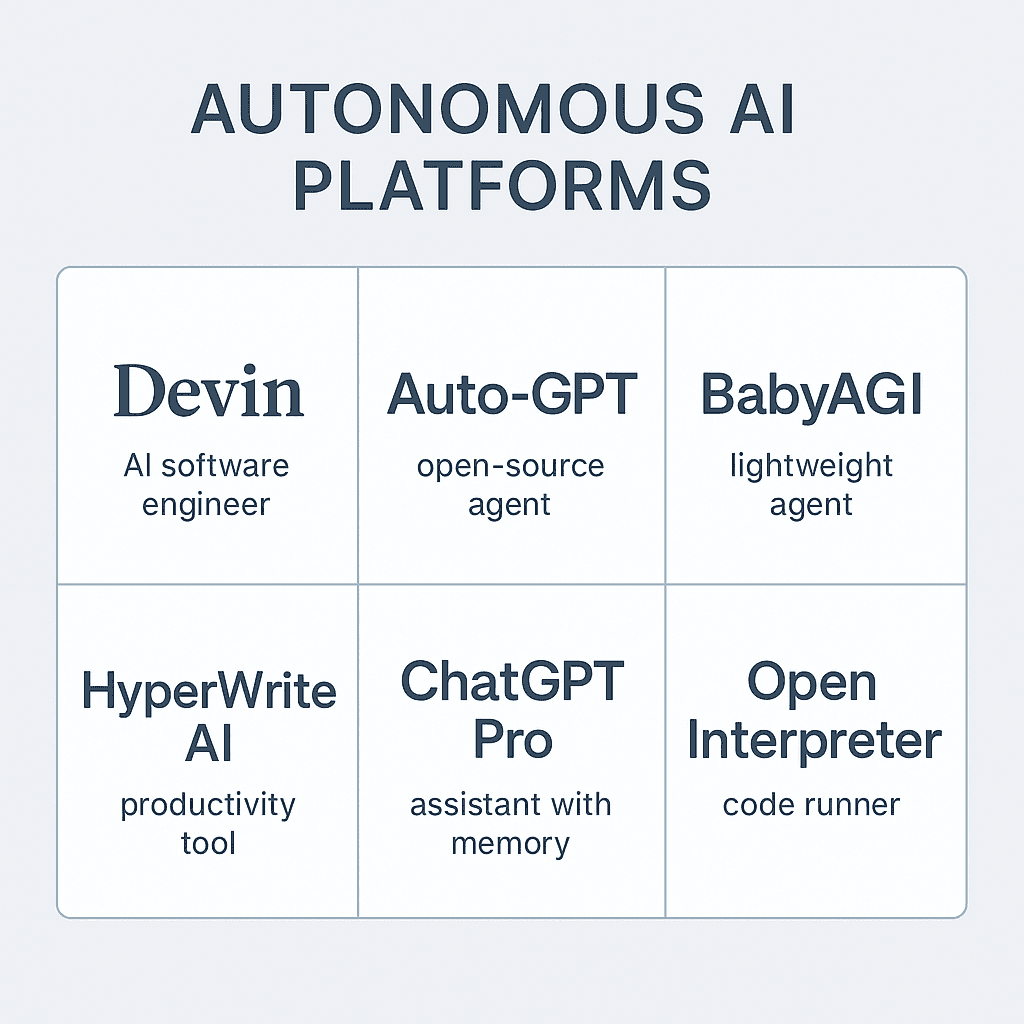
From Tools to Teams: What’s Next?
Agentic AI is setting the stage for a new era of digital collaboration, not just automation.
- Multi-Agent Ecosystems: Think teams of AI agents collaborating like departments such as marketing agents, dev agents, research agents, working toward shared goals.
- Embedded Intelligence: Agents will live in calendars, documents, inboxes, and design tools all anticipating needs and driving next actions.
- Personalized Memory & Learning: With persistent memory, agents can tailor actions based on past preferences and performance feedback.
- Strategic Autonomy: These systems evolve and self-optimize, improving with every iteration similar to onboarding a fast-learning junior employee.
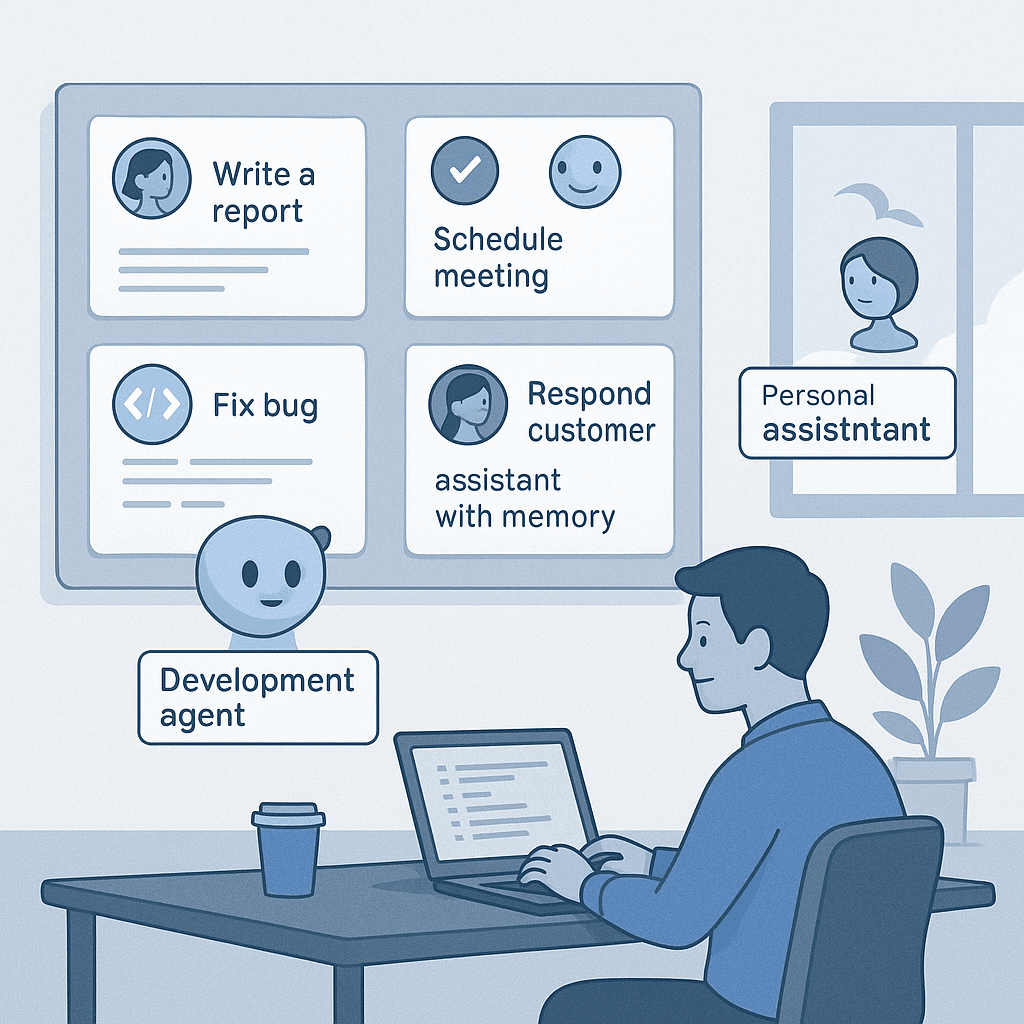
Final Thoughts: Moving from Automation to Orchestration
We’re at a turning point. Where traditional AI accelerated tasks, agentic AI plans, collaborates, and scales. It doesn’t just make work faster it changes the nature of how work gets done.
The distinction between traditional and agentic AI is more than technical, it’s strategic. Traditional AI helps us work faster. Agentic AI helps us work smarter by collaborating, planning, and adapting over time.
Forward-thinking businesses are already making the leap. As Forbes outlines, agentic AI brings tangible advantages like task ownership, self-improvement, and real-world execution, but also raises challenges around compute costs, memory management, and orchestration.
At OMI, we believe the future of business lies in orchestrating human and AI collaboration at scale. Whether you’re enhancing CX, automating internal ops, or accelerating digital transformation, agentic AI offers a competitive edge that’s too significant to ignore.
Let’s build your agentic AI strategy together.
Additionally, discover how integrating AI into your CRM can revolutionize customer interactions in our article: AI Innovation and Impact: A Conversation with Noah Kenney